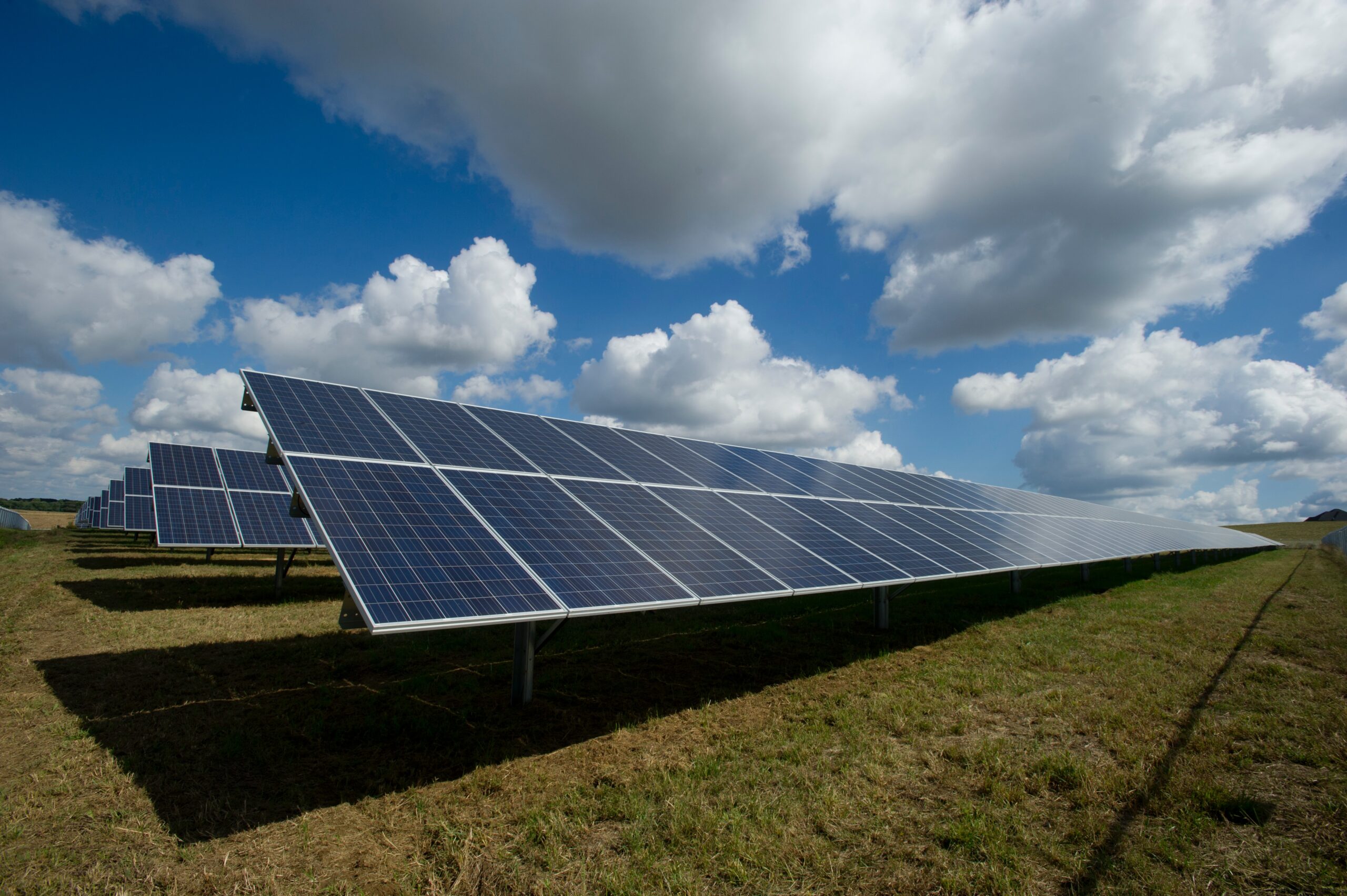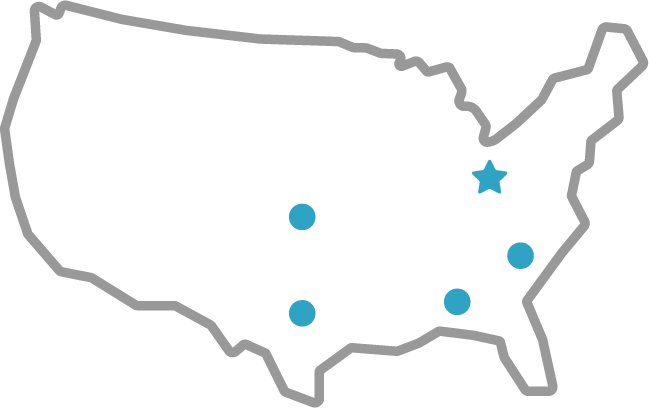JCL Journal
Solar Energy vs. Traditional Utilities“We are like tenant farmers chopping down the fence around our house for fuel when we should be using Nature's inexhaustible sources of energy – sun, wind and tide… I’d put my money on the sun and solar energy. What a source of power! I hope we don’t have to wait until oil and coal run out before we tackle that.” -Thomas Edison

Hi, My Name Is: Solar Energy
Last month, the JCL Energy Journal explored how electricity gets from power plant to you and took a look at how electric utilities work. As it usually happens, the more you know, the more questions that you have. One of those questions was about solar energy. We know it provides a source of sustainable and renewable power. We now also know it causes some big issues for utility companies. How do we reconcile the two? This week, the JCL Energy Journal takes a look at solar energy’s history and future as a major producer of energy.
The Rise of Solar
The capture and use of solar energy is not a new concept. As early as the 7th century BC, humans used magnifying glass lenses to capture sunlight to light fires. Civilizations around the world used systems of mirrors to light underground rooms with sunlight. Even buildings had solar concepts in mind; the concept of a naturally-heated sunroom by giant sun-facing windows was common even in Roman architecture.
The invention of the solar panel to convert sunlight into energy was the game-changing event in energy’s history. We credit the invention of the first solar cell to Charles Fritts in 1883, but most agree that the first true modern solar panel was invented by Daryl Chapin, Calvin Fuller, and Gerald Pearson in 1954. They created the first silicon solar cell that could power an electric device for hours of time. Since then, solar panels have become increasingly more efficient.
The first residence to run on solar was built in 1973 by the University of Delaware. Named “Solar One,” the building had solar panels integrated directly into the rooftop. Initially, solar panels cost roughly $300 per watt produced. By 1975, it dropped to approximately $100/watt. Today, modern solar panels cost as little as $0.50/watt. It is little wonder that, by 2016, there were over a million solar installations in the U.S. alone, and the demand continues to rise.
Harnessing Solar for Power
Before we get into the conflict between solar energy and traditional utilities, let’s take a look at exactly how solar panels work. How do you get electricity out of sunlight? Most of today’s solar panels operate off of solar photovoltaic technology, often called PV technology. A PV device is made up of “cells” of different semiconductor materials.The US Department of Energy explains it this way:
“When the semiconductor is exposed to sunlight, it absorbs the light, transferring the energy to negatively charged particles called electrons. The electrons flow through the semiconductor as electrical current, because other layers of the PV cell are designed to extract the current from the semiconductor. Then the current flows through metal contacts—the grid-like lines on a solar cell—before it travels to an inverter. The inverter converts the direct current (DC) to an alternating current (AC), which flows into the electric grid and, eventually, connects to the circuit that is your home’s electrical system. As long as sunlight continues to reach the module and the circuit is connected, electricity will continue to be generated.”
So the cells convert light into electrical energy, about 1-2 watts worth each. Many cells are connected together in chains and placed between glass or plastic layers to protect them from the elements. These cell panels combine to make modules. Modules are then connected to form systems. Most residential rooftop systems are made up of 30 interconnected modules.
Attached to these modules are mounting structures that keep the panel facing the correct way. Along with the mounting structure, each module has components that transfer the DC electricity produced by the cells and convert it to AC electricity used to power homes, appliances, etc.
The Effect of Solar Energy Production on the Grid: Pros
Solar energy has a lot of great benefits when it comes to producing electricity. One obvious upside is the move away from fossil fuels for energy production. The sun provides unlimited, clean power at a much lower environmental cost to the planet. Because of this, solar can be highly cost effective, depending on the area you live in.
When it comes to the electrical grid, solar provides a few specific benefits that could help solve some of the grid’s primary issues. In most cases, homes and businesses with solar panels are still interconnected to the grid for supplemental power when solar isn’t enough. Think nighttime and cloudy, rainy days. Because of this, extra power produced by solar panels can be sent back to the grid for the use of others. This lowers grid stress caused by long distance transmission while still meeting demand.
Solar also helps avoid “peaks” in the grid’s demand curve. Solar allows for power storage and use at a later time, which keeps the demand at a far more steady and manageable level for power plants. Even more important, new solar installations taking stress off the grid lowers the cost of production and the need for maintenance and upkeep. As we’ve seen in previous articles, the grid is currently facing a crisis of outdated infrastructure. Transitioning to rely more on solar energy could help defray some of those costs.
The Effect of Solar Energy Production on the Grid: Cons
Seems like a win-win situation, right? Not quite. There are a few things keeping solar energy and traditional utilities from coexisting peacefully. Most of them, of course, have to do with money. We saw in the previous post how utilities companies make most of their profit by putting money into building “traditional” grid infrastructure. Unfortunately, solar throws a huge wrench in the works. Solar energy users purchase far less energy from utilities. Even worse, solar doesn’t work well with the “top-down” transmission structure from centralized power plants. Instead, solar panels work more on a local distribution model. All this lowers the revenue for utility companies.
Utility companies also fear competition after a century of uncontested rule. As solar energy decreases in cost and increases in efficiency, chances are more homeowners will turn to solar power. Many utility companies are working to prevent or restrict solar within their areas for this very reason. To be fair, they may have a point… solar energy, while infinitely renewable, is not predictable. The sun is not always out, and solar production drops when it isn’t. Traditional utilities would then have to make up the difference.
Can They Work Together?
Despite the conflicts between solar energy and traditional utilities, there have been some partnerships formed. Some utility companies made the decision to keep up with the solar trend. The compromise system? Net metering. Basically, the utility companies monitor power input and output for solar homes. Any excess power produced and sent into the grid gets a “credit” towards future needs when solar isn’t enough. The user’s monthly bill takes into account how much power was used balanced against how much was produced and shared.
Some utility companies who practice net metering have also taken into consideration “time-of-use” rates. Simply put, excess solar energy is more valuable at certain times during the day. In the middle of the day when the grid’s power needs are lower, excess solar energy’s value is lower. The utility company doesn’t want to pay the same amount for unneeded power, so they adjust the rates based on the time. Of course, this usually prompts solar users to store their excess power during the day and use it at night when the time-of-use rates go up. Overall, it is a delicate balancing act that still has a way to go towards perfection.
The Solar Energy Saga: To Be Continued…
Navigating the line between solar energy and traditionally produced energy is a delicate balancing act. We still have some years and several obstacles to go before solar can be “top dog.” Regardless of which side of the fence you fall on, one thing is clear: both solar energy and traditional utilities need reliable ways to transmit and distribute power. JCL Energy is here to help navigate the options and provide the best solution. From traditional power structures to the new world of solar energy production, we’re dedicated to getting you the right equipment for the job.
Sources
“How Does Solar Work?” Energy.Gov, Department of Energy, https://www.energy.gov/eere/solar/how-does-solar-work. Accessed 13 Sept. 2022.
Palmetto. “How Solar Power And The Grid Work Together.” Home Solar Energy Solutions, 16 Aug. 2021, https://palmetto.com/learning-center/blog/how-solar-power-and-the-grid-work-together.
Papiewski, John. “The Cost Difference Between Solar Energy and Electricity.” Bizfluent, 5 Nov. 2019, https://bizfluent.com/about-6689388-cost-between-solar-energy-electricity.html.
Richardson, Luke. “History of Solar Energy: Timeline & Invention of Solar Panels.” EnergySage Blog, EnergySage, 3 May 2022, https://news.energysage.com/the-history-and-invention-of-solar-panel-technology/#:~:text=In%20theory%2C%20solar%20energy%20was,light%20torches%20for%20religious%20ceremonies.


